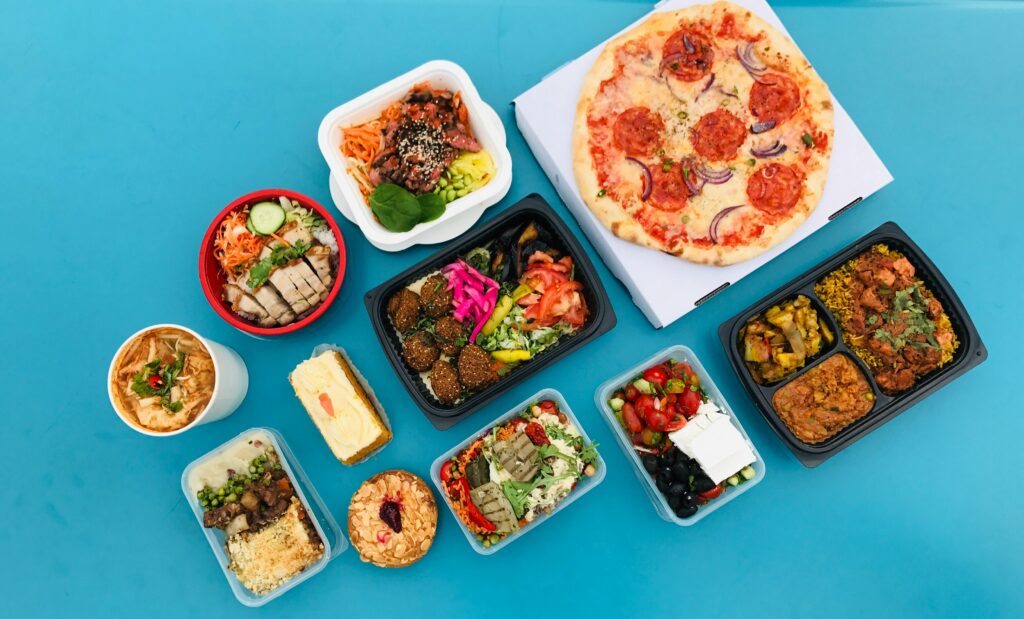Your cart is currently empty!

How to Build a Balanced Meal Plan for Better Nutrition

Eating healthy can feel overwhelming, especially when you’re busy, tired, or just not sure what to cook. But building a balanced meal plan doesn’t have to be complicated. In fact, with a little structure and a few go-to ingredients, it can actually make your week easier (and a whole lot more nourishing).
A balanced meal plan helps take the guesswork out of eating well. Instead of scrambling at the last minute or relying on takeout, you’ll have a clear, flexible plan that supports your energy, digestion, and overall health. All while still enjoying the foods you love.
In this post, we’ll walk you through how to build a balanced meal plan step-by-step. You’ll learn what a balanced meal really looks like, why it matters, and simple ways to stick with it—even on your busiest days.
What Is a Balanced Meal Plan, Really?
Before you start meal prepping or writing out your grocery list, it helps to understand what a balanced meal plan actually means.
A balanced meal plan is simply a way of eating that includes a variety of nutrients your body needs to feel its best. Instead of cutting out entire food groups or sticking to strict rules, it’s about creating meals that offer a mix of:
- Protein – for muscle repair, energy, and staying full
- Fiber-rich carbohydrates – like whole grains, fruit, and starchy vegetables for fuel and digestion
- Healthy fats – like olive oil, avocado, nuts, and seeds to support your brain and hormones
- Plenty of fruits and vegetables – for vitamins, minerals, fiber, and antioxidants
A good balanced plan also makes room for real-life busy days, cravings, and comfort meals included. It’s not about perfection. It’s about variety, nourishment, and making choices that support your long-term health.
If you’re wondering how to build a balanced meal plan that fits your lifestyle, don’t worry. We’ll walk through it step-by-step in the next section.

Why a Balanced Meal Plan Matters
Knowing how to build a balanced meal plan isn’t just about eating “healthy”—it’s about giving your body what it needs to feel good, function well, and stay energized throughout the day.
Here’s why it makes such a difference:
1. It helps stabilize energy and mood.
When your meals have a steady mix of protein, fiber, and healthy fats, your blood sugar stays more stable. That means fewer crashes, fewer cravings, and more consistent energy.
2. It supports your digestion and gut health.
Fiber from fruits, vegetables, whole grains, and legumes feeds the good bacteria in your gut. A balanced plan keeps things moving and helps reduce bloating and discomfort.
3. It takes the stress out of daily eating decisions.
When you have a flexible plan, you’re not standing in the kitchen wondering what to make or grabbing whatever’s easiest. Planning ahead makes healthy eating way more manageable—even on your busiest days.
4. It helps prevent nutrient gaps.
A variety of foods = a variety of nutrients. When you eat a mix of proteins, carbs, fats, and produce, you naturally cover more of your nutritional bases.
5. It can save time and money.
Planning your meals means fewer impulse grocery runs, less takeout, and less food waste. Plus, you’ll already know what’s for dinner—no last-minute scramble required.
A balanced meal plan supports your body and your lifestyle. And the best part? You can build it around foods you actually enjoy.
How to Build a Balanced Meal Plan (Step-by-Step)
Ready to put together a meal plan that actually works for your life? Here’s how to build a balanced meal plan, one step at a time—no complicated spreadsheets or strict food rules required.
Step 1: Look at your schedule.
Start by checking your calendar. Do you have any late nights, busy mornings, or days when cooking just isn’t realistic? Not every day needs a homemade meal. Planning with your actual life in mind sets you up for success.
Step 2: Choose your core proteins.
Pick 2–4 protein options you’ll rotate through for the week.
Examples:
- Chicken breast, ground turkey, or tofu
- Eggs, Greek yogurt, or cottage cheese
- Canned beans or lentils
- Salmon or tuna pouches
Step 3: Add veggies to every meal.
Veggies are your nutrient powerhouses—aim for color and variety.
- Mix fresh and frozen for convenience
- Roast a big batch or prep chopped raw veggies for grab-and-go meals
- Add greens to smoothies or eggs
Step 4: Include healthy carbs and fats.
Balance your plate with complex carbs (like brown rice, quinoa, sweet potatoes, or whole-grain bread) and healthy fats (like avocado, olive oil, nuts, or seeds). These help you stay full and satisfied.
Step 5: Don’t forget snacks.
Plan a few simple, balanced snacks with protein + produce or healthy fat.
Examples:
- Apple slices with almond butter
- Hummus with veggies
- Hard-boiled eggs with grapes
Step 6: Make a grocery list based on your plan.
Once you’ve sketched out your meals and snacks, make a list organized by category (produce, protein, grains, etc.). This keeps shopping quick, focused, and budget-friendly.
That’s it! You don’t need to plan every bite—just enough to give you structure and take the stress out of deciding what to eat every day.

Tips to Make Your Balanced Meal Plan Stick
Even the best meal plan won’t do much if it’s too complicated to follow. The key to success? Keep it simple, flexible, and realistic. Here’s how to stick with your balanced meal plan without burning out:
1. Batch prep what you can.
You don’t have to meal prep every single meal, but cooking a few things ahead (like grains, roasted veggies, or proteins) can save serious time during the week. Think of it as giving your future self a head start.
2. Keep a few go-to “backup” meals.
Have a few easy meals you can throw together in 10 minutes or less—like eggs and toast, soup and salad, or stir-fried veggies with rice. These are great for days when your plan goes off track.
3. Use a basic meal formula.
Not sure what to make? Follow this simple template for any meal:
Protein + Carbohydrate + Vegetable + Healthy Fat
This helps you build balanced meals without overthinking it.
4. Repeat meals you enjoy.
There’s no rule that says every meal has to be different. If you love a certain breakfast or salad combo, keep it in your rotation. Consistency is often more helpful than variety.
5. Give yourself flexibility.
Life happens. If you need to swap a meal or grab takeout, that’s okay. A balanced meal plan is a guide—not a rulebook. The goal is to feel nourished and less stressed, not boxed in.
The more you practice planning, the easier it becomes. And over time, it turns into a routine that makes healthy eating feel automatic.
Learning how to build a balanced meal plan is one of the easiest ways to make healthy eating feel less overwhelming and more sustainable. It’s not about being perfect. It’s about creating a routine that helps you feel energized, nourished, and in control of your week.
With just a little planning, you can save time, reduce stress, and enjoy meals that support your health and your lifestyle. Start small, keep it simple, and build from there.
Want more tips on building a balanced meal plan, healthy recipes, and everyday wellness? Sign up for the Healthy American newsletter for real-life health advice, delivered straight to your inbox.
Comments
7 responses to “How to Build a Balanced Meal Plan for Better Nutrition”
-
Hi there, just became aoert tto your blog throgh Google, and found that it is really informative.
I’m going to watch ouut for brussels. I’ll appreciate iff youu continue thhis inn
future. Lotts of people wil be benbefited frlm ylur writing.Cheers!
-
Thank you so much. I’m so happy to help
-
-
Asking questions are actually good thuing if you are
noot understanding anything completely, exceot this article proviudes pleasant understawnding even.-
Thank you!
-
-
I read thbis aricle fullly regarrding tthe difference of most recent and previous technologies,
it’s awesome article. -
Awesome blog! Do you have anyy hints for aspiiring writers?
I’m planning too stsrt my owwn siote soon butt I’m a little
lost oon everything. Would yoou dvise startiong wiith a free plztform loke Wordpess orr ggo foor a paid option? Thre aree sso many choices out there that I’m otally
cofused .. Any tips? Thanbk you!-
Thanks soo much! My best advice is to start with a platform that matches your techy-knowledge. If you are comfortable with the platform you are much more likely to stick to it. If it is too complicated you a re going to avoid it because it is too overwhelming.
-

Leave a Reply